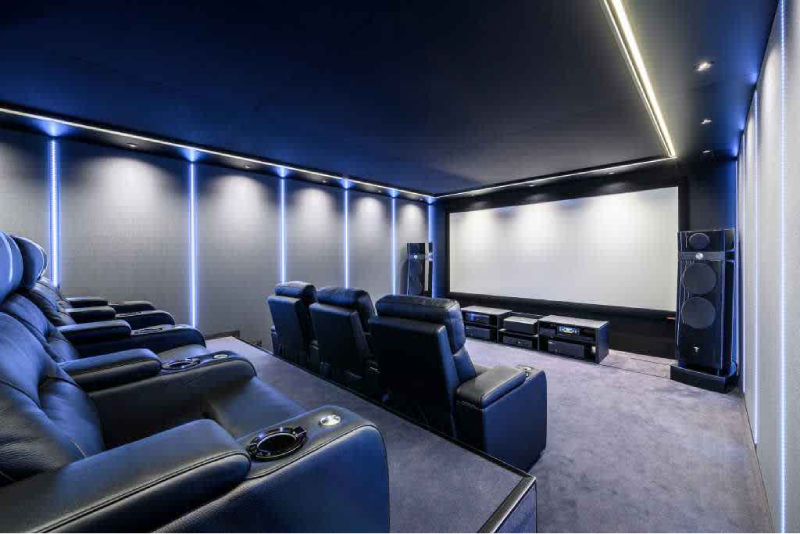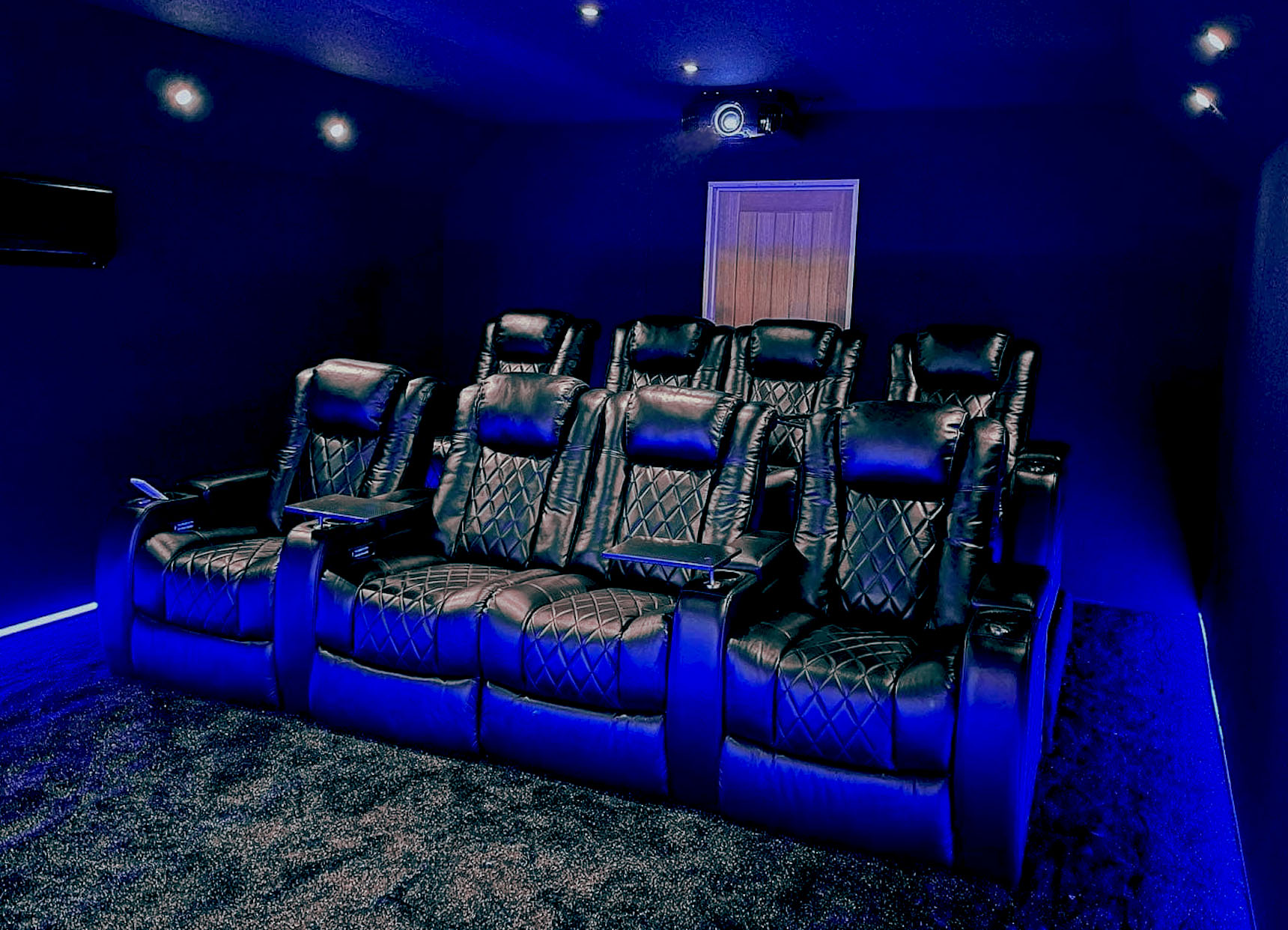Home Theater 101: Everything You Required to Know for a Cinematic Experience in the house
Developing a home cinema that measures up to the motion picture experience of a business theater includes careful consideration of several components, consisting of display choice, sound systems, and room format. Whether you are pondering the suitable screen dimension or the details of surround sound, recognizing these basics is vital.
Selecting the Right Screen
When establishing a home theater, selecting the right display can make or break the viewing experience - home theater installation tampa. The screen works as the centerpiece of your configuration, influencing photo high quality, watching angles, and total visual. Secret variables to think about include display type, size, and resolution
Initially, figure out the appropriate display size based on your area dimensions and seating distance. A general standard is to rest around 1.5 to 2.5 times the diagonal display dimension for optimal watching. Next, pick in between different display types, such as fixed-frame, mechanized, or retracting displays, each offering distinctive benefits. Fixed-frame screens typically offer the ideal image quality, while motorized options permit versatility in space usage.
Resolution is another important variable. For a truly immersive experience, consider a screen created for 4K or also 8K web content, ensuring sharpness and clearness. Furthermore, think about the screen's gain, which impacts illumination and comparison; a greater gain can improve brightness in well-lit rooms, while a lower gain may be preferable for darker atmospheres.
Choosing Audio Equipment
Audio equipment is an essential component of any kind of home cinema system, substantially boosting the total viewing experience. The selection of audio gear can establish the deepness, clearness, and immersion of sound, essential for producing a cinematic atmosphere.
When selecting audio equipment, think about a surround stereo, which usually consists of a receiver, several speakers, and a speaker. A 5.1 or 7.1 channel system is recommended, where the first number stands for the speakers and the second the subwoofer, providing an immersive soundscape. The receiver is the heart of the system, handling sound and video signals, and need to sustain modern-day styles like Dolby Atmos for an enhanced spatial experience.
Quality speakers are vital; search for versions that use a balanced audio profile with good bass action. Floor-standing audio speakers can produce richer audio, while bookshelf alternatives save area. Furthermore, take into consideration wireless options for ease of installment, although wired systems typically deliver premium efficiency.

Optimum Seating Arrangements
Creating a perfect home cinema experience pivots dramatically on ideal seating plans. The plan of seats plays an essential duty in both convenience and checking out top quality, straight affecting the general motion picture experience.
First, consider the screen dimension and watching distance. An usual standard is to position seats at a range around 1.5 to 2.5 times the diagonal size of the screen. This makes certain an immersive experience without straining the eyes.
Following, elevation is critical. If your seats is in a tiered layout, the back rows must be more than the front to stay clear of obstructions. For flat seats, make sure that the front row is not as well close to the screen, which everyone has a clear line of sight.
In addition, think about the setup in terms of social characteristics. Team seating can improve the public experience, while private seats may be preferred for individual watching.

Last but not least, focus on convenience with ergonomic seating that supports extensive viewing periods. Including recliners or cushioned seats can substantially boost the experience, making the home movie theater a recommended destination for both enjoyment and relaxation.
Lighting and Ambiance
Reliable illumination and setting are necessary components of a well-designed home cinema, as they substantially influence the watching experience. The appropriate illumination can improve the motion picture feel, while poor choices can interfere with it. For optimal results, consider a layered illumination approach that includes ambient, job, and accent lighting.
Ambient lighting offers basic lighting, guaranteeing that the space is not completely dark, which can strain the eyes. Dimmer switches are extremely recommended, enabling adjustments based on the material being seen. Job lights, such as wall sconces or flooring lamps, uses useful illumination for activities like analysis or browsing the room without disrupting the overall atmosphere.
Accent illumination can be made use of to highlight architectural attributes or create prime focus, including deepness and passion to the room. LED strip lights behind screens or along shelves can provide a refined glow that improves the visual experience without frustrating the customer.

Wiring and Installation Tips
A well-planned wiring configuration is crucial for accomplishing optimal performance in your home theater system. Appropriate wiring not just makes sure premium sound and video signals but also boosts the general aesthetic of your area. Begin by drawing up your design, determining where each element will certainly be positioned, including your screen, speakers, and receiver.
When picking wires, focus on high-grade, properly gauged wiring to minimize signal loss. HDMI wires must be made use of for video links, while speaker cable should match the requirements of your audio speakers and amplifier. Choose for in-wall ranked cables to abide by safety and security requirements and preserve a clean look.

Conclusion
In recap, producing an outstanding home theater experience requires mindful factor to consider of different components, consisting of screen selection, audio equipment, seating setups, illumination, and electrical wiring. By prioritizing these aspects, a cinematic environment can be effectively reproduced, permitting for immersive checking out experiences that equal conventional movie theater setups.
Producing a home cinema that matches the motion picture experience of a commercial home theater design tampa theatre involves mindful consideration of several components, consisting of screen option, audio systems, and room format.When setting up a home movie theater, choosing the appropriate display can make or damage the checking out experience. Next, choose between numerous display kinds, such as fixed-frame, motorized, or retractable screens, each offering unique benefits. For a truly immersive experience, consider a screen made for 4K or even 8K content, guaranteeing sharpness and clarity.In recap, creating an outstanding home cinema experience requires mindful factor to consider of numerous components, consisting of display choice, audio tools, seating plans, illumination, and circuitry.